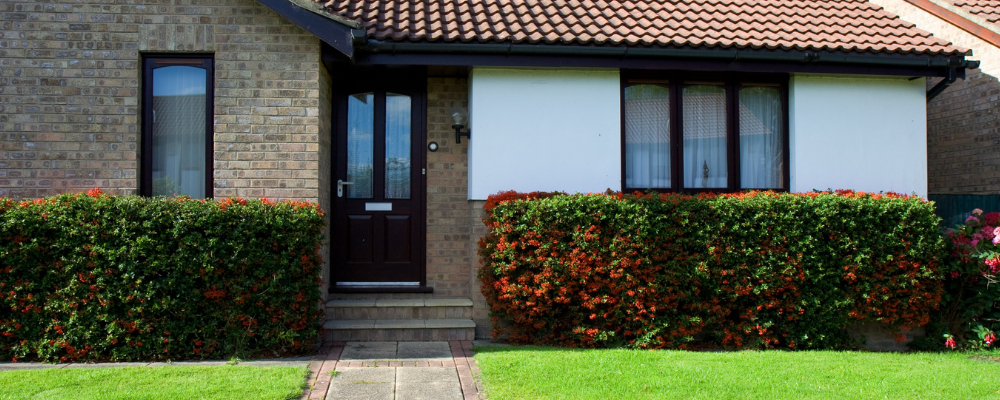A quick outline
The historical cost of a home versus the fair market value may sound similar, but they are quite different. The fair market value is not the price of the home, but rather the value, which means what a willing buyer would pay for the house in an open market. If you’re a real estate investor, you might need to learn how to find the historical market value of a home, here’s how to do it.
Table of Contents
Real estate investors, along with home buyers and sellers, are all very interested in determining the value of properties. This number is useful for many reasons, however it’s a process to work it out and there are a number of ways to do it. In this article we’ll cover some of the ways to find the market value of a home, and why this number is useful for real estate investors, in particular.
Historical cost vs fair market value - What's the difference?
Historical Cost
The historical cost of a property is the price that was paid for it when it was bought and sold in previous transactions. The county courthouse has records of the price that a home has sold for each time it has changed owners.
Fair Market Value
The fair market value of a property is the price that is agreed upon between a willing buyer and seller of a home, who both have the same knowledge and facts about the house. This doesn’t necessarily refer to the value of the home, but simply the price that is agreed upon.
What’s the difference?
The historical cost of a property is the actual price that has been paid for the property at each transaction, which is the monetary value of it. While fair market value isn’t necessarily the true value of the property, but instead the agreed upon price that a buyer and seller are willing to pay in an open market at that particular point in time.
Historical house prices can be easier to find, while fair market value is worked out using a longer process and various methods. Simply put, one is an actual price, the other is a potential price that the home could fetch in an open market.

How to find the past value of a house
Knowing how to research the past values of a property can be a useful tool, whether you’re investing in real estate or looking into the equity of your home property taxes.
1. Search public records
The most accurate way to find out the past value of a house is to head for the public records. To find what you’re looking for amongst this data, you’ll need certain information, such as the property address, along with the section, block and lot numbers. If you don’t know what these are you can get them from your local assessor’s office.
Then you’ll need to visit the jurisdiction site of your property online or contact the office itself to receive the record of assessment for the property. This document may be housed at a different office, so it may take some time to track it down, particularly if it’s an old property.
2. Try a tax assessor
Visit the tax assessor at your local county or municipality where they should be able to locate the information you need by using your address. This information will either be in a book or on their website, depending on the age of your house. Finding the previous purchase prices may come at a fee if the house is old and it’s difficult to find the information.
3. Use agents and websites
Get in touch with a real estate agent, as they will have access to the MLS and can check the records to see if your property was listed on there previously. If this doesn’t work, you could have a look at real estate websites like Zillow to find the past transaction prices of your property, which may have been listed there.

How to find the current market value of a house
There are a host of factors that influence the value of a house, so finding the current value can be done in various ways. Here are a few…
1. Jump online
As with most things, your first step is the trusty internet. There are many home value estimators online and most are free and easy to use, like New Silver’s home appreciation calculator. These tools are growing in popularity as seen in a NerdWallet survey, which showed that about 22% of homeowners in the US have used online estimators to determine the value of their property.
These tools usually require some basic information about your property, such as the address and details of the property, and they can access the public records to come up with an estimated price of your home. Make sure to include any renovations or repairs that you’ve done to the house, because these are likely to impact the value of the house.

2. Ask an agent
Consulting a real estate agent is a common way to find out the value of a home. Agents usually have a good knowledge of the real estate market in each neighborhood, so they will be able to advise you on the value of your house. They have tools like the MLS to gain an idea of the price of comparable properties in the area and they will use this, plus their knowledge of the demand in the area to make an informed decision on your home’s value.
3. Do an analysis
A Comparative Market Analysis (CMA) is one of the best ways to figure out how much your property is worth. You can do this by making a list of homes in your area that have recently been sold, that are very similar to yours. It’s a good idea to use a spreadsheet to keep track of each house, and make sure that the houses have been sold within the last 3-6 months.
You can use the following details as a guideline for similarity:
- Number of bedrooms, bathrooms and other rooms in the house
- Age and size of the house in square feet
- The area where the house is located
- The sales price of each comparable property
- The price per square foot
4. Get it appraised
Either a buyer or a seller can hire an appraiser to do an appraisal of a property. They will do a thorough look through the house and spend time in the neighborhood to gather as much information as possible to determine the value of the house. A home appraisal includes various factors, such as the location, nearby facilities such as schools, the condition of the house and more.
The appraiser will put together a report with all of their findings and this will include similar homes in the area that have sold recently, to ultimately advise you on the appraisal value of the home.
5. Do an inspection
A home inspection is an important step in the process to finding out the value of your home. This will give you a good idea of the safety and condition of the house, which buyers will often request anyway, and as such, help you determine the value of your home. A home inspection covers a walk-through of the house to determine what might need repairing or replacing. It can be a valuable tool to determine the fair market value of a house.
Why is fair market value so important to real estate investors?

The fair market value of a property is important to those who are buying and selling houses, but it is also a valuable tool for real estate investors for a number of reasons:
- The fair market value of a house is helpful when trying to price it right so that it sells quickly once it’s listed on the market.
- To work out your taxes every year, as this is worked out as a percentage based on the fair market value of the property.
- Fair market value is useful to know, if any legal disputes arise, so that all parties are on the same page and if damages are done to the property these can be calculated.
- It is also a valuable tool when it comes to homeowner’s insurance, which uses the fair market value to determine the policy charge, and how much the house would cost to replace.
Closing thoughts
While the historical price of a house may be easier to work out than the fair market value, the fair market value can be used not only to determine how much a house could be sold for, but also to work out other costs. Which makes both numbers useful for real estate investors who need a well-rounded idea of the value of a property.
Fair market value has no set formula and there are a variety of ways to calculate it. In fact, it’s helpful to use more than one of these to get a more accurate number because it impacts many factors from legal disputes to property taxes. However, it’s also important to remember that no matter what the fair market value is, ultimately, the value of the home is whatever a willing buyer is going to offer for it.



